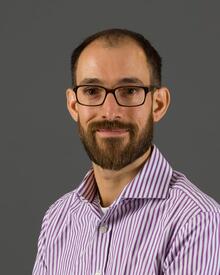Written by Jon Parsons. This is an excerpt from an article originally published on Waterloo News.
Dr. Chris Fletcher is part of a scientific consortium developing satellite technology to better understand climate change

The High-altitude Aerosols, Water Vapour and Clouds (HAWC) mission received $200 million of funding to create transformative new satellite instruments for measuring changes in the atmosphere.
HAWC is directly supported through the Canadian Space Agency (CSA) and will undertake a mission expected to last some 12 to 15 years.
The CSA mission contributes three instruments and a satellite as part of the international NASA-led Atmosphere Observing System (AOS).
The University of Waterloo is among the top institutions in the country that will participate and produce cutting-edge research to improve our understanding of global climate change.
"This is generation defining for Canadian climate and atmospheric science. The last time a fully Canadian-designed and made instrument launched was in 2003, with the SCISAT mission."
- Dr. Chris Fletcher, professor of geography and environmental management
Fletcher specializes in earth system modelling. His research incorporates insights from computer science to create climate models. Along with his involvement through HAWC, he is a member of the modelling working group for the AOS science team.
“The scale of the project is huge, and it’s likely not to launch until 2030. Once it’s up there, it can be expected to give us data for at least five years and hopefully much longer,” he says. “The way these missions go, you don’t wait until 2030 to say, ‘okay, this is what data we need.’ You use this time to figure out all those details so when the mission launches you are ready to make the most of the time you have.”